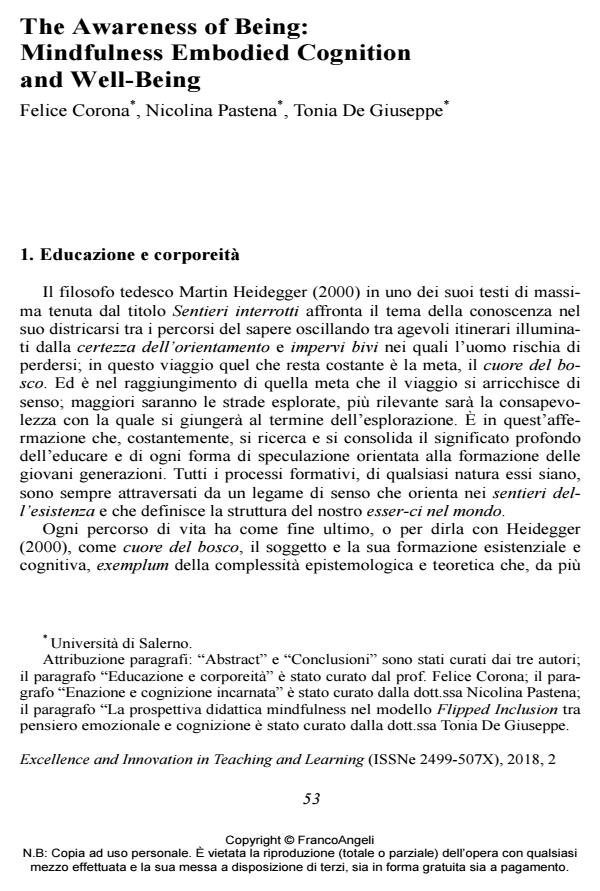The Awareness of Being: Mindfulness Embodied Cognition and Well-Being
Journal title EXCELLENCE AND INNOVATION IN LEARNING AND TEACHING
Author/s Felice Corona, Nicolina Pastena, Tonia De Giuseppe
Publishing Year 2018 Issue 2018/2
Language English Pages 20 P. 53-72 File size 213 KB
DOI 10.3280/EXI2018-002004
DOI is like a bar code for intellectual property: to have more infomation
click here
Below, you can see the article first page
If you want to buy this article in PDF format, you can do it, following the instructions to buy download credits

FrancoAngeli is member of Publishers International Linking Association, Inc (PILA), a not-for-profit association which run the CrossRef service enabling links to and from online scholarly content.
Formative processes are always crossed by a link of meaning that orients us in the paths of existence and defines the structure of our being in the world. The contrast between the emotional/affective aspect and the rational/cognitive aspect represent the main source of tension (Dewey, 1968) that characterizes human suffering. The recent neuro-scientific acquisitions and the neuropedagogical field of investigation enriched by many speculative ideas (Minichiello & Pastena, 2015), favor the idea of a circular relationship between perception and action. The complexity of the educational event is characterized by a constant communicative-interpretative movement between the educating and the educator, where signatures of various kinds come into play. mindfulness (Siegel, 2011), as the subject’s ability to cultivate the wealth of experience (Siegel, 2015), could respond to the "social need" (Beck, 2000) of emotional management, with drive control (Gordon, 2014) to avoid drifting from conflict, which places the educational in a prominent formative position (Corona, De Giuseppe, 2016, p. 101).
Keywords: Consciousness, emotions, corporeity, education, flipped inclusion, mindfulness.
Felice Corona, Nicolina Pastena, Tonia De Giuseppe, The Awareness of Being: Mindfulness Embodied Cognition and Well-Being in "EXCELLENCE AND INNOVATION IN LEARNING AND TEACHING" 2/2018, pp 53-72, DOI: 10.3280/EXI2018-002004